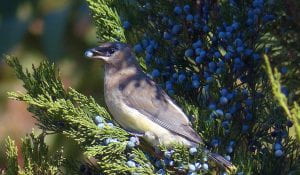
In the fall all the trees lose their leaves leaving a barren and desolate landscape behind until spring. That is if you overlook all of the evergreens! Although their foliage is can be a somewhat muted green this time of year, our evergreen bushes and trees can break up an otherwise barren landscape and on top of that, they provide shelter and food for wildlife.
This week’s the challenge is to find and identify three different native evergreen trees or shrubs.
- Spend sometime outside looking for evergreens.
- Try to identify at least three different kinds.
- Take a picture of them.
- Submit your photo.
Why Native Tree?
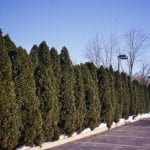 American Arborvitae (Thuja occidentalis)
American Arborvitae (Thuja occidentalis)
This native evergreen tree is usually tall and narrow. It commonly used in landscaping and there are many different cultivars available. Most commonly used to create a natural fence along property borders or the edges of parking lots.
Identification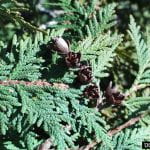
It has scale-like leaves are soft and overlap like roof shingles or fish scales.
Learn more about American Arborvitae.
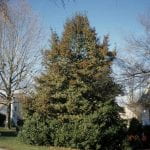 American Holly (Ilex opaca)
American Holly (Ilex opaca)
This native evergreen tree is both dense and pyramid shaped. It is usually between 15 to 30 feet tall in the landscape.
 Identification
Identification
It has thick, leathery, spiky dark green leaves. It female tree can have bright red berries.
Learn more about American Holly.
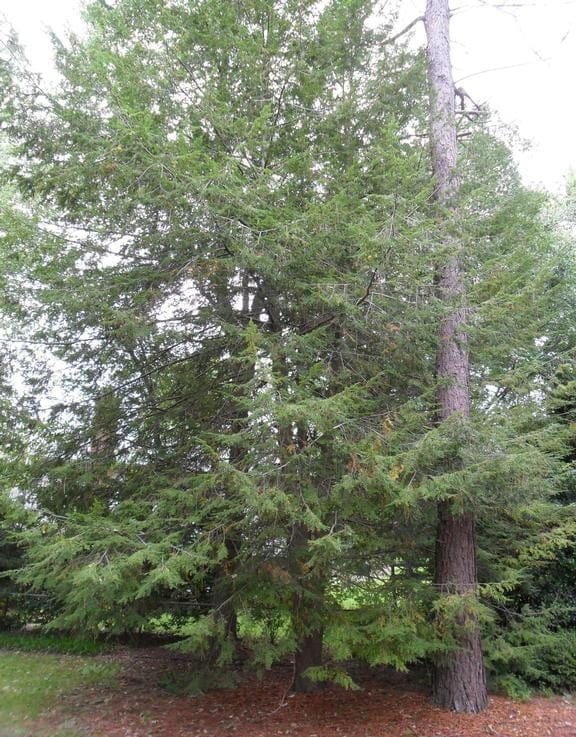 Eastern Hemlock (Tsuga canadensis)
Eastern Hemlock (Tsuga canadensis)
This native evergreen tree is usually grows 40-70 feet tall. It has soft graceful, horizontal to pendulous branches. New York State has more hemlock trees that any other state in the nation. It is found in mixed hardwood forest, but can also be used in the landscape. It is currently threatened by the invaisve hemlock woolly adelgid, an insect hat the attacks and can severely damage or kill hemlock trees.
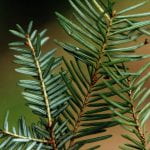 Identification
Identification
The needle are short and flat. They are arranged flat on the stem and have two white bands on the underside of the needles. They also small ½ to 1 inch cones.
Learn more about Eastern Hemlock.
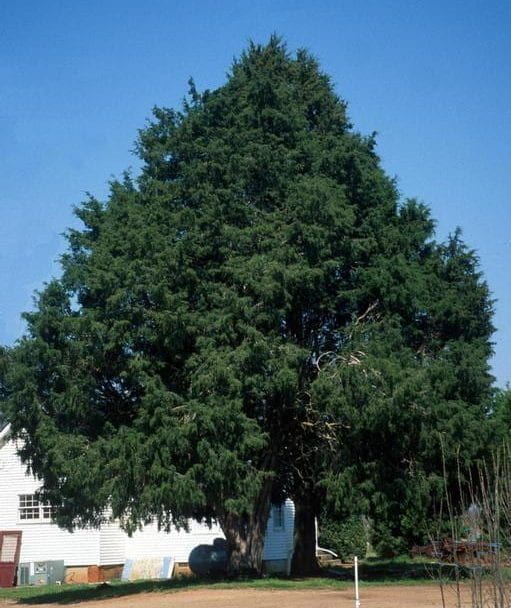 Eastern Red Cedar (Juniperus virginiana)
Eastern Red Cedar (Juniperus virginiana)
This native tree is can be found growing along roads or in abandoned fields. As a tree it can grow up to 50 feet high but many cultivars exist so you can find this plant growing as a short tree, a shrub, or even a groundcover.
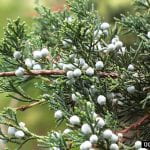 Identification
Identification
Its both scale-like and awl-like needles that are closely pressed to the stem. It has reddish brown bark that shreds in long vertical strips and at this time of year many of these trees are covered with waxy blue berries.
Learn more about Eastern Red Cedar.
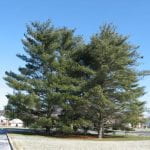 Eastern White Pine (Pinus strobus)
Eastern White Pine (Pinus strobus)
This evergreen tree can is usually 50 to 80 feet tall and from 30 t0 50 feet wide. It produces long skinny cones ranging from six to eight inches in length.
 Identification
Identification
White pine trees are really easy to identify. First off pine trees are the only evergreens that has needles in bundles. Secondly white pines are the only ones in our area in which there are five needles in a bundle.
Learn more about Eastern White Pine.
 Rhododendrons (Rhododendron spp.)
Rhododendrons (Rhododendron spp.)
There are eight species of rhododendron native to New York. They are all large evergreen bushes usually ranging from 8 to 15 feet tall with showy blooms in spring and through early summer. They are an under story plant meaning that they can thrive in moderate to dense shade.
 Identification
Identification
These large bushes have large thick leathery leaves. The deer love them, so in our area many of them are bizarre looking bushes as it looks like have pruned so that they have no leaves or branches below 5 feet.
Learn more about Rhododendrons.
Evergreen Identification Resources
Winter Tree Identification Part II: Evergreen Trees – NY State Parks
Winter Greens – NY State Parks
What are you waiting for? Get outside and look for some native evergreens!
Don’t forget to take some pictures and submit then to the 2021 Get Outside Nature Challenge.